2025 Lithium Battery Buying Guide: 8 Dimensions to Avoid Costly Mistakes and Choose a Reliable Supplier
August 8, 2025 / ht926476@gmail.com / Battery Basics
Intro — Why choosing the right lithium battery matters
The push toward electrification and smarter systems has never been stronger. Demand for high-energy, reliable batteries is growing fast. That’s why our 2025 lithium battery buying guide is essential for anyone looking to make smart choices. A battery is no longer just a power source — it shapes system reliability, performance, safety, and market competitiveness. That makes lithium battery selection one of the most important decisions you’ll make for any electric product.
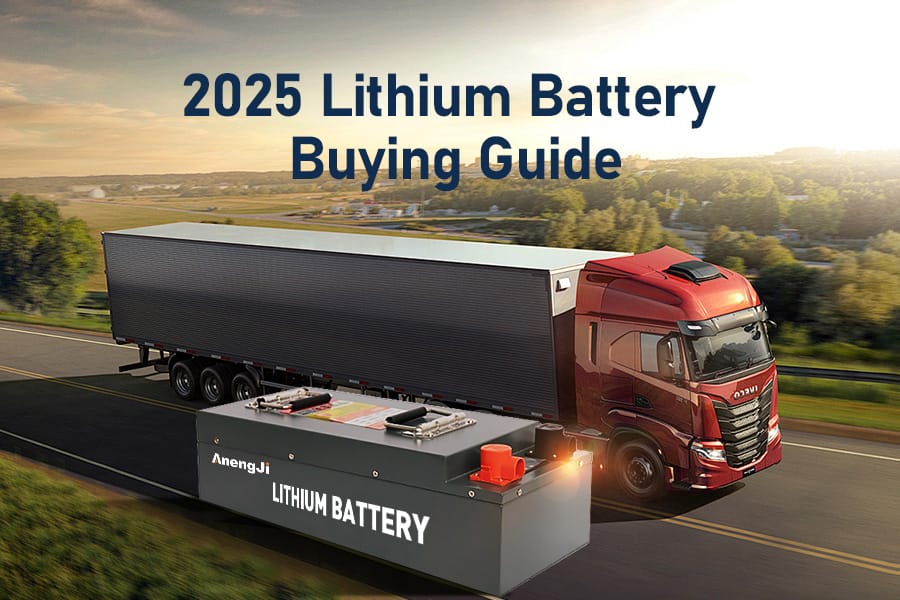
Industrial equipment, specialty vehicles, energy storage systems, and high-end electronics all rely on batteries that perform consistently over years. Pick the wrong supplier and you risk project delays, cost overruns, warranty exposure, and even safety incidents. Some recent failures in consumer batteries — thermal runaway, overcharge events, and fires — make one thing clear: comparing voltage and capacity alone won’t cut it.
This lithium battery buying guide lays out eight practical dimensions to evaluate before you buy. Follow them and you’ll avoid common pitfalls. We’ll also use Anengji as an example of the kind of trusted lithium battery manufacturer and lifepo4 battery supplier you should look for.
1. How to define your battery requirements precisely
Many companies start a purchase by listing a single item: “24V 100Ah.” That’s a start — but it’s not enough. The real starting point is a clear, detailed description of how the battery will be used. Vague specs lead to mismatched packs, integration headaches, and safety gaps.
Batteries are used in many different ways. A delivery vehicle that runs repeated short routes needs long cycle life, vibration resistance, and quick recharge. A marine patrol boat needs corrosion protection and reliable cold starts. A remote telecom backup at high altitude may need steady discharge at –30°C. Each scenario changes which cell chemistry, BMS strategy, and mechanical design you should choose.
When you define requirements, include these key items:
- Electrical needs: system voltage, nominal capacity, continuous current and peak current demands.
- Environment: operating temperature range, humidity, salt spray, dust, and vibration levels.
- Space & mounting: installation envelope, mounting points, and whether the pack must be embedded.
- Protection: required ingress protection (for example, an IP67 battery pack for dust/water resistance).
- Usage profile: daily deep cycles vs. standby float, charge methods, need for OTA updates or remote telemetry.
Instead of saying, “I need a battery,” say: “We need a pack for a mining service vehicle that must perform daily deep cycles, tolerate –25°C cold starts, and support CAN communication with our vehicle ECU.” That level of detail yields a custom lithium battery solution that actually works in the field.
At Anengji we start every project with a free technical consultation. We help define the real-world use case so the recommended solution matches real operating conditions — not just a datasheet.
2. LiFePO₄ vs. NMC (or other lithium chemistries): which fits your use case?
Once your needs are defined, the next big choice is cell chemistry. The two most common types of lithium batteries on the market are lithium iron phosphate (LiFePO₄, abbreviated as LFP) and nickel cobalt manganese (NMC). (Search terms like lifepo4 vs lithium ion often point to this decision.)
LiFePO₄ (LFP)
Strengths: excellent safety, long cycle life, stable thermal characteristics, and lower cost per cycle. LFP chemistry resists thermal runaway much better; its thermal runaway threshold is significantly higher than that of many NMC cells. LFP packs typically reach 3,000+ cycles at an 80% capacity retention point in many applications.
Trade-offs: lower energy density — roughly 120–160 Wh/kg — so heavier or larger packs for the same energy compared to NMC.
Best for: deep cycle battery uses such as forklifts, AGVs, stationary energy storage, golf carts, and many electric utility vehicles where long life and safety trump absolute energy density.
NMC (and high-energy ternary cells)
Strengths: higher battery energy density (often 180–250 Wh/kg), making them attractive where weight and volume are critical.
Trade-offs: typically shorter cycle life and higher sensitivity to thermal stress, which requires more advanced thermal management and sometimes more conservative charge policies.
Best for: passenger EVs, scooters, drones, and high-end consumer devices where range and compactness matter most.
A practical rule: don’t chase energy density at the expense of reliability. For city service vehicles and industrial equipment, LFP often wins because it balances lithium battery safety, lifetime value, and total cost of ownership. For lightweight, range-driven applications, NMC may be the right call.
Anengji sources both chemistries and helps customers choose based on the lithium battery selection criteria that matter: expected cycle life, discharge profile, safety needs, and system weight/volume.
3. The BMS (Battery Management System) is the true decider of lifetime and safety
The battery cell is the “heart” of the battery, responsible for energy storage and release; while the BMS is its “brain,” responsible for monitoring, decision-making, and protection, ensuring the system operates safely and efficiently.A weak BMS can turn good cells into a poor system — causing premature aging, inaccurate state-of-charge (SOC) readings, and in worst cases, safety failures.
A high-quality BMS should provide:
- High-precision sensing: cell voltage measurement accuracy within roughly ±3 mV ensures correct balancing and state estimation.
- Reliable algorithms: SOC and SOH calculations built on real-world test data to avoid sudden shutdowns and false capacity readings.
- Active balancing: support for useful balancing current (1 A or more in many designs) to keep cell voltages even and extend pack life.
- Low-temperature strategies: self-heating or controlled charging schemes for cold starts (for example, safe operation down to –20°C when combined with appropriate cell choices).
- Communication & integration: CAN bus, Modbus, Bluetooth monitoring, and optional 4G/NB-IoT for remote diagnostics.
Modern smart BMS systems also support firmware updates (OTA), advanced fault logging, and customizable alarm logic — essential features for OEM integration. If your vehicle or machine needs to speak to the battery, the BMS should support CAN communication in BMS and allow OEM-level customization.
The lithium battery manufacturer independently develops a BMS intelligent control system and provides customized protocol support to ensure that the battery pack can be seamlessly integrated into your machine control system.We also tune protection thresholds and balancing behavior to match the chosen cell chemistry and application profile.
4. When standard packs don’t fit — how true customization works
Off-the-shelf batteries are tempting. But many industrial and specialty applications need unique solutions. Tight spaces, extreme environments, and unusual power profiles often require a lifepo4 custom battery pack or a bespoke NMC assembly.
Customization typically covers these areas:
- Cell selection & pack architecture: designing the correct series/parallel layout for the required voltage, capacity, and discharge/charge profile.
- BMS development: adding protocol support (CAN 2.0B, Modbus), custom alarm logic, or specialized fault responses.
- Mechanical design: custom enclosures, mounting features, materials (aluminum, reinforced plastics), and ingress protection ratings such as IP67.
- Feature integration: internal heating elements, fans, Bluetooth modules, LCD displays, or special connector types.
Customization doesn’t have to be slow or prohibitively expensive. Done right, it shortens overall development cycles by removing the need to redesign the host machine around a battery that doesn’t fit. We’ve designed ultra-thin underfloor packs for buses, slim modules for compact EVs, and rugged packs for mining vehicles — all built to the machine, not the other way around.
5. Quality control and global compliance — certifications you must demand
If you plan to sell in Europe, North America, or Australia, regulatory compliance is not optional. Without the right certifications, your shipment may be held, you may face fines, or worse — your product could be banned.
Key certifications and documents to verify:
- UN38.3 + MSDS — mandatory for shipping lithium batteries by air or sea; shows the battery passes transport safety tests.
- CE — required for EU market entry, including alignment with RoHS, REACH, and WEEE directives.
- EU Battery Regulation (e.g., (EU) 2023/1542) — new rules require carbon footprint documentation, recyclability, and minimum recycled content in many cases.
- UL — widely required in North America for EV and energy storage applications.
Ask your supplier for a complete compliance package: test reports, Declaration of Conformity (DoC), Certificate of Origin (COO), and Safety Data Sheets (MSDS). A reliable lithium battery supplier will provide these proactively and help you through customs documentation.
Anengji maintains strict QA processes and full documentation for export, ensuring lithium battery certification is complete and traceable for each shipment.
6. How to evaluate supply-chain stability and delivery capability
Great tech matters. So does getting the product on time. Many projects fail because batteries arrive late or in insufficient quantity. Make delivery capability a hard requirement in supplier evaluation.
What to check:
- Production capacity: Can the manufacturer scale to your volumes quickly?
- Lead times: Are standard models stocked, and how fast can custom samples be produced (for example, sample lead times of ~15 days are a useful benchmark)?
- Logistics & warehousing: Does the supplier have overseas warehouses or logistics partners in your key markets to support local delivery?
- Contingency planning: Can the supplier handle raw material fluctuations, shipping disruptions, and policy changes?
At Annengji, our modern factories deliver nearly 4 million battery units a month — about 600 MWh annually — covering everything from small-batch pilot runs to full-scale mass production. We partner with major logistics providers and operate cooperative warehouses in North America and Europe for faster, lower-cost delivery.
For urgent projects, we offer priority scheduling and real-time production tracking so you’re never in the dark. On-time delivery isn’t a promise. It’s our responsibility.
7. After-Sales and Full Lifecycle Support
A quality lithium battery should last 5–8 years — but the product is only as good as the service that comes with it. Some suppliers vanish after the sale, leaving customers scrambling for answers. That’s not partnership.
We back our lithium batteries with a clear 5–8 year limited warranty, covering normal operating conditions:
- Discharge: -20°C to 60°C
- Charge: 0°C to 50°C
- Approved chargers only
Our smart BMS system records performance data, which we use for fair and transparent warranty claims. Beyond warranty, we offer:
- Remote diagnostics
- OTA firmware updates
- On-site technical support
- Emergency replacement
We’ve built a global technical service network so your team gets help fast — no matter where you operate. We are simultaneously advancing our battery recycling and reuse program to support resource recycling and promote green, low-carbon development.
For us, the job doesn’t end when the product ships. It ends when your system runs smoothly — year after year.
8. Sustainability — Now a Market Requirement
By 2025, green supply chains aren’t optional in the EU, US, and other high-value markets. Customers now demand proof of a battery’s carbon footprint, material recyclability, and eco-friendly production. The new EU Battery Regulation requires:
- Carbon footprint reporting
- Removable battery design
- Minimum recycled material content
Without these, clearing customs will be nearly impossible.
We lead with sustainable manufacturing, verified carbon footprint accounting, and partnerships for proper battery recycling. Our goal? To help you meet today’s certification needs and prepare for tomorrow’s ESG compliance.
From “Buying a Battery” to Building a Technology Partnership
At Annengji, we’ve earned our reputation as a reliable lithium battery manufacturer serving everything from EVs and industrial machines to energy storage systems. Our product lines cover:
- E-bikes, e-scooters, golf carts
- Forklifts, sightseeing buses, and utility vehicles
- RVs, marine, and outdoor equipment
- Passenger EVs and large-scale ESS
Whether you’re comparing LiFePO4 vs lithium-ion, looking for custom lithium battery solutions, or need a UN38.3 and CE certified lifepo4 battery supplier, we’re ready to help with free technical consultation, sample support, and production optimization.
Let’s Get Started
Request our Lithium Battery Selection Form and get a tailored solution for safe, efficient, and sustainable electrification.
Annengji — Power You Can Count On.
tags:
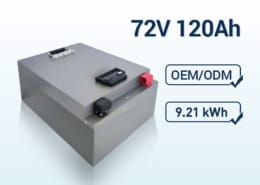
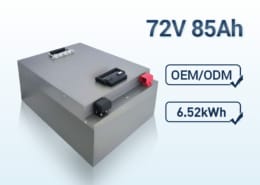
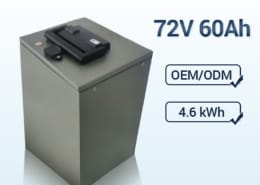
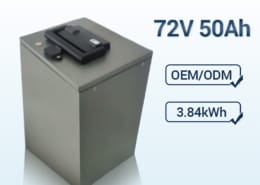



Leave a Reply
Want to join the discussion?Feel free to contribute!